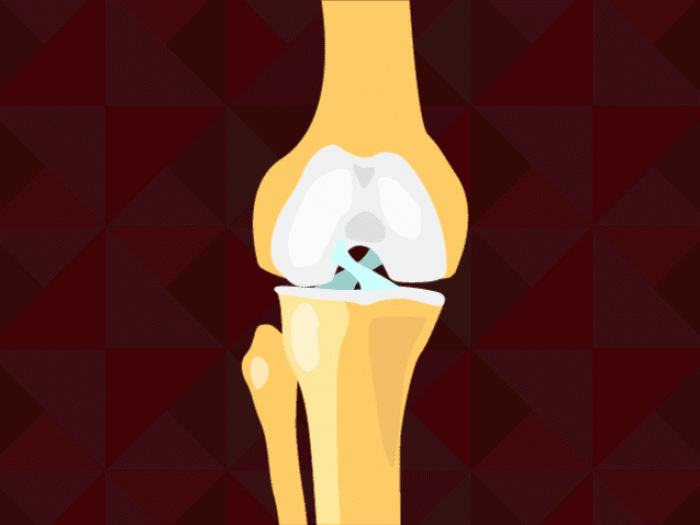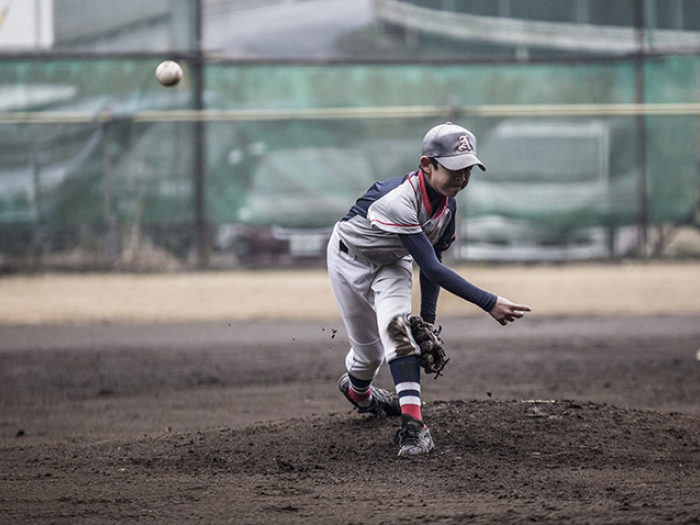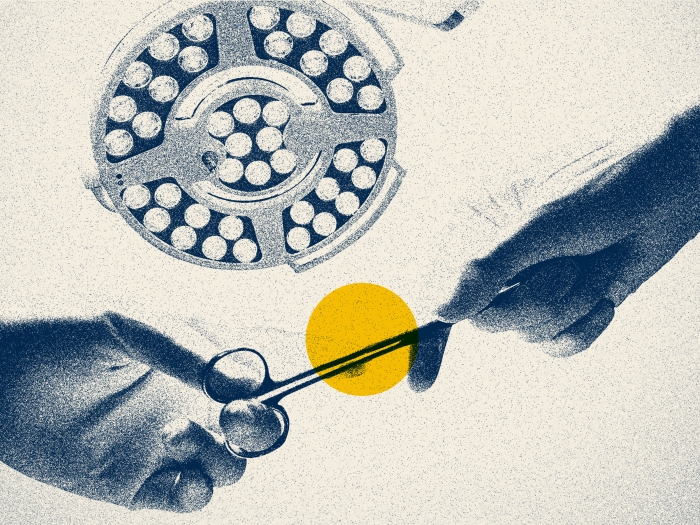The use of an internationally banned substance can end a pro athlete’s career. But this doesn’t mean that, when safely administered, all banned compounds lack medical merit.
1:00 PM
Author |

As the world awaits the start of the 2016 Summer Olympics, doping in athletes remains a hot topic.
SEE ALSO: Why U.S. Doctors Love Opioids and Hate Marijuana for Chronic Pain
Doping, or the use of a compound or procedure that has been banned by the governing body of the sport because it provides an unfair competitive advantage, is governed by the World Anti-Doping Agency. WADA sets the guidelines that most international sports associations follow.
Christopher Mendias, Ph.D., A.T.C., assistant professor of orthopaedic surgery and molecular and integrative physiology at the University of Michigan, explains why WADA regulates certain substances, how that's changing and how some of these drugs may help rehabilitate injuries in everyday and elite athletes alike.
What are some of the drugs or medications athletes use to enhance performance?
Mendias: In general, you can break the compounds and techniques athletes use into three categories: drugs that increase athletes' endurance, drugs that make athletes faster and stronger and drugs that help athletes recover after competition.
For endurance, doping compounds generally work to increase the amount of oxygen you can carry in your blood. These range from drugs like erythropoietin, or EPO, that increase the production of oxygen-carrying red blood cells that circulate in athletes' bodies, to transfusions, where you physically inject more red blood cells directly into an athlete's veins. This type of doping is more often seen in sports where athletes have to run or cycle long distances with little to no breaks during competition.
When it comes to making athletes stronger, many drugs fall in the category of anabolic agents, working like the hormone testosterone and to trigger the production of new proteins in muscle. These proteins make the "engine" of muscle cells bigger and able to generate more strength. You see this type of doping being used in sports that involve a lot of sprinting, or in collision sports like football or rugby.
The third class of drugs, those for recovery, can accelerate the normal recovery process of athletes' injured cells and help load up fuel stores quicker. Many of the drugs in this class are growth factors and compounds that are similar to hormones in the body that help tissue repair.
These are increasingly being used across all different types of sports. Take swimming or track and field, where athletes must perform in qualifying rounds of events before making it to the finals. The ability to recover quickly can allow athletes to work at a higher level in the qualifying rounds to ensure they make it to the finals, and then perform their best in the finals as well. For collision sports like football or rugby, the faster you repair the injury to damaged muscle cells, the quicker you can compete at a high level again.
For growth hormone, most of the data show that in adults it has minimal to no performance-enhancing effects on healthy muscle, so we don't actually anticipate any 'doping' effects in our current study.Christopher Mendias, Ph.D., A.T.C.
Elite athletes who use these substances are breaking the rules of their sports. But are there times when these substances can be helpful?
Mendias: While some drugs and substances on WADA's banned list have no legitimate medical use, many do. Drugs that increase red blood cell levels are often used in patients with kidney disease or who are recovering from certain types of cancer. Compounds that make muscle cells larger and stronger have approved use in combating severe muscle-wasting diseases, like what is observed in certain types of myopathies and in men with unusually low levels of androgenic hormones.
SEE ALSO: Addressing the Long-Term Impacts of Concussions in Living Patients
Sometimes these drugs have effects on the body that are different from their normal medical use. Take, for example, beta blockers, which are drugs that are used to treat high blood pressure. Beta blockers can calm jittery nerves and increase the accuracy for sports where precision is important, like golf and archery.
Can you talk more about your research in this area?
Mendias: My lab does research both on the biochemical and genetic side of muscle weakness and in bringing therapies to patients in the clinic who suffer from injuries that have profound muscle atrophy.
The vast majority of patients that we treat in sports medicine, nearly all, actually, are not elite and professional athletes. We are talking about patients who are physically active that sustain an injury while playing recreational sports. Sports medicine clinicians and researchers are increasingly paying attention to the long-term effects of sports injuries. If an injury is severe enough to sideline a patient for a month or so, there's a good chance that there will be long-term consequences of that injury that will extend many years, sometimes decades, into their later life.
In patients with ACL tears, for example, even after surgery and rehab, muscles in their injured leg are often around 30 percent weaker than they were before the injury. Over time, this weakness slowly erodes the cartilage in the knee. My lab is currently investigating the possibility that growth hormone — a banned substance by WADA — could help address this weakness in an FDA-approved clinical trial. We selected growth hormone based on numerous lab and clinical studies that have shown it can help protect muscles after injury, though it has not been previously studied in patients with ACL tears.
This is just one potential medical application of WADA-banned substances. And WADA does offer exemptions for the legitimate medical use of some drugs. Before it can approve the use of the drug, WADA considers the potential performance-enhancing benefits and weighs this against the medical use.
We don't yet know whether growth hormone can help restore strength closer to normal levels in patients with ACL tears, but if our study and others are successful and growth hormone is approved by the FDA for treating this condition, WADA would have to evaluate on a case-by-case basis whether an athlete would be allowed to take growth hormone if they've suffered a major knee injury. For growth hormone, most of the data show that in adults it has minimal to no performance-enhancing effects on healthy muscle, so we don't actually anticipate any "doping" effects in our current study. But other drugs like anabolic agents that do enhance strength in healthy muscle could give athletes a long-term edge in performance enhancement, even after they have recovered from their injury.
Are there other drugs with legitimate medical uses in sick patients, but no medical benefit in healthy athletes?
One of the more recent high-profile antidoping cases involved a newly banned drug, meldonium. This drug, which has been around for decades, is used in some Eastern European countries to treat patients with heart disease where low levels of oxygen getting to the heart causes tissue damage. But for athletes, meldonium seems to promote recovery and oxygen delivery to muscles and enhance endurance performance.
Maria Sharapova, a famous tennis player, received a two-year ban for testing positive for the drug. A recent documentary reported that nearly a fifth of Russian track and field athletes were taking meldonium. It is a hard stretch to justify the use of a heart failure drug in people who have among the best cardiovascular systems of anyone in the world.
How do you think this research will impact professional sports in the future?
Mendias: We are at a very exciting time in the field of sports medicine. There have been numerous advances in our understanding of how biochemical and genetic factors control the function of muscle, bone, cartilage and tendon cells. We can now use our knowledge of these processes to improve the treatment of injuries to these tissues. Unfortunately, some of the technologies that show a lot of promise in regenerative medicine also can be used for doping purposes. WADA continues to develop new technologies and tests to detect doping, but the list of potential doping compounds and technologies seems to outpace our ability to detect this in athletes.
Antidoping policies are in place not only to help ensure equity in competition, but also for the health and safety of athletes. While there have been unscrupulous physicians and scientists involved in many doping scandals in recent times, the vast majority of sports medicine clinicians and researchers are interested in finding ways to help restore injured athletes back to their pre-injury levels and not to engage in therapies that give athletes advantages that go above and beyond what they could achieve through approved training techniques and practices.

Explore a variety of health care news & stories by visiting the Health Lab home page for more articles.

Department of Communication at Michigan Medicine
Want top health & research news weekly? Sign up for Health Lab’s newsletters today!





